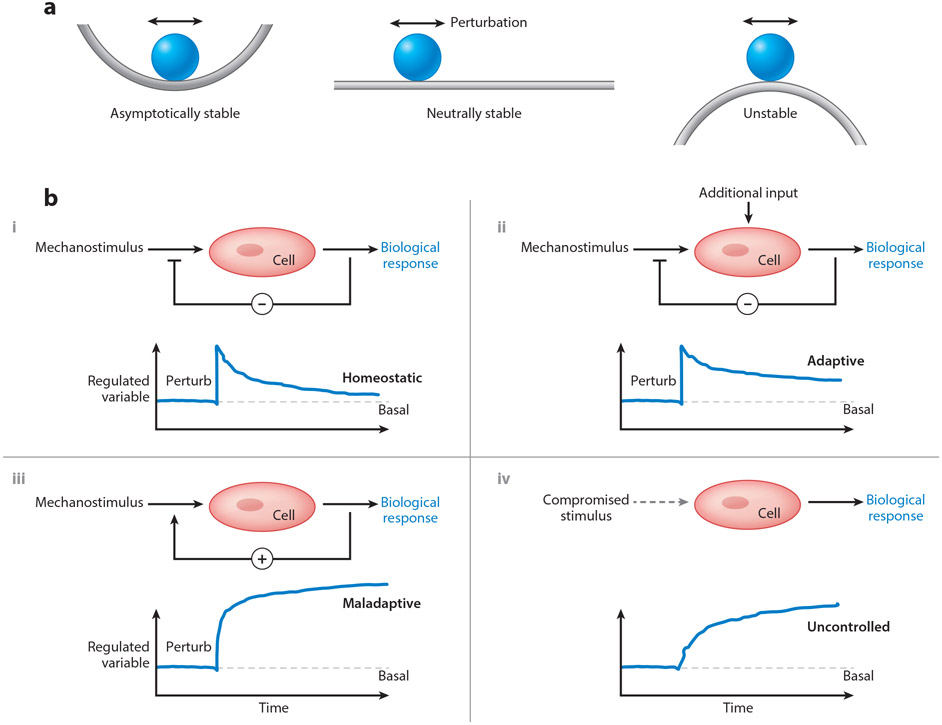Figure 4.
(a) Conceptual representation of three common types of (in)stabilities: asymptotically stable, neutrally stable, and unstable. Imagine, respectively, that a perturbation in loading would cause the rigid sphere to move, returning to its original location on the left, finding a new nearby location in the middle, and falling far from its original position on the right. Note that neutral stability allows adaptivity in biology, but also increased vulnerability to instabilities that manifest as diseases. (b) Possible control systems relevant to arterial health and disease: three show responses to perturbations (vertical change in the regulated variable, such as stress or material stiffness) and one (lower right) in the context of compromised mechano-sensing. In particular, negative feedback (−) is restorative, as in cases of acute or modest sustained changes in hemodynamics (upper left), but can be over-ridden by additional stimuli, such as inflammation (upper right). In contrast, positive feed-back (+), as in adventitial fibrosis (cf. Figure 1), is typically maladaptive, moving the controlled variable from its basal value (horizontal dashed line). Finally, systems that rely on appropriate input can become maladaptive when the input signal is compromised or lost, as in dysfunctional mechanotransduction. Overall, negative feedback promotes asymptotic mechanobiological stability, negative feedback with additional non-mechanical stimuli represents neutral stability, and cases of positive feedback or compromised mechano-input represent instabilities.

